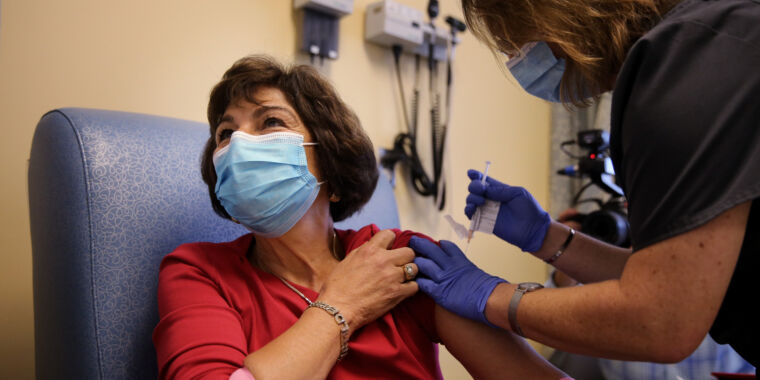
Data are available and the COVID-19 vaccines are working. They were injected into tons of people around the world in addition to the initial tests and found to be safe and effective. Each of the three available vaccines uses unique technologies to stimulate an immune response in your body, but none of them involves injecting a live virus into your arm. In short, they can’t make you sick with COVID-19.
Vaccines, together with social distance, masks and smart political decisions about the reopening of companies, will be our ticket out of this hellish mass experience. But getting a vaccine is complicated, and how you do it varies a lot depending on where you live.

States, territories and our state-like district (DC) all have ample latitude to define their own COVID-19 policies and procedures. Advice and paths for a COVID-19 vaccine vary depending on the region of the USA where you live, but we have developed a guide that should provide an accurate overview of how to apply the vaccine.
Step 1: Find your place in the queue
Certain people are eligible to receive a vaccine sooner than others. The CDC has issued guidelines on prioritizing certain groups by age and profession, but these are suggestions, not federal law. The states have the final decision and are prioritizing groups of people in a slightly different way. You will need to check your own state’s guidelines, but we have summarized the CDC review below, which should provide some approximate guidance. In order from the beginning to the end of the line:
- First Group (1a): Health personnel and residents of long-term care facilities, such as nursing homes.
- Second group (1b): People aged 75 and over, if they are not already in a long-term institution. In addition, essential frontline works such as firefighters, educators (including teachers, daycare centers and support staff), grocery workers, public transport workers, postal workers, food and agricultural workers, industry workers, police and correction officers.
- Third Group (1c): People aged 65 to 74, if they are not already in a long-term institution. People aged 16 to 64 with underlying medical conditions that put them at greater risk for COVID-19. In addition, essential workers outside the front line, such as “people working in transport and logistics, food service, housing construction and finance, information technology, communications, energy, law, media, public safety and public health”, according to the CDC.
- Fourth Group: All others.
Absent from any guidance provided by the CDC is the mention of prisoners, who due to their proximity are ready for outbreaks of COVID-19.
Step 2: Check your state’s deployment process
There is no centralized federal or national list to which you apply for a vaccine. Each state, territory and associated state for free has registration information available on the websites of their health departments.
Here is a list of health department websites for each state.
Some health department sites are more helpful than others, offering hotlines, statewide registration lists and eligibility checkers that will tell you if you can get a vaccine already, if you answer some questions about your age, sex, profession and healthy conditions. Other states simply direct you to a list of vaccination providers to call.

Lukasz Sokol / Bloomberg via Getty Images
Step 3: Find places where you can be vaccinated
Check out VaccineFinder, developed by Boston Children’s Hospital and CDC, to find vaccines available near you and follow your Twitter account for updates. Other places to check include:
- Medical offices, hospitals and emergency care centers
- A local community health center
- State and local health departments. Find yours at the CDC Health Department’s Vaccine Finder or at this list of links. Vaccination locations vary widely: they can be MLB and NFL stadiums, mobile clinics, convention centers or city public health clinics.
- CVS, Walgreens, Costco, Walmart, Rite Aid, Kroger, Publix, Safeway, Albertsons and other pharmacies, retail stores and grocery stores can offer vaccines through their own websites and processes. Texas-based HEB will also receive more doses. Target (in partnership with CVS), Winn-Dixie and Hy-Vee are also on the list to start offering vaccines.
Many vaccination sites operate by appointment. If there are sites that will send you text messages or emails when scheduling is available, sign up for one or more of them.
A government-provided vaccination site, such as a community health center or public health department, can be a safer bet if you are concerned about unexpected medical bills or don’t want to reveal your citizenship or immigration status. They tend to be free as well. In our research for this article, we found that many of them say on their websites that they do not ask for information about health insurance, proof of insurance or immigration status. Check with your local facilities to be sure.
